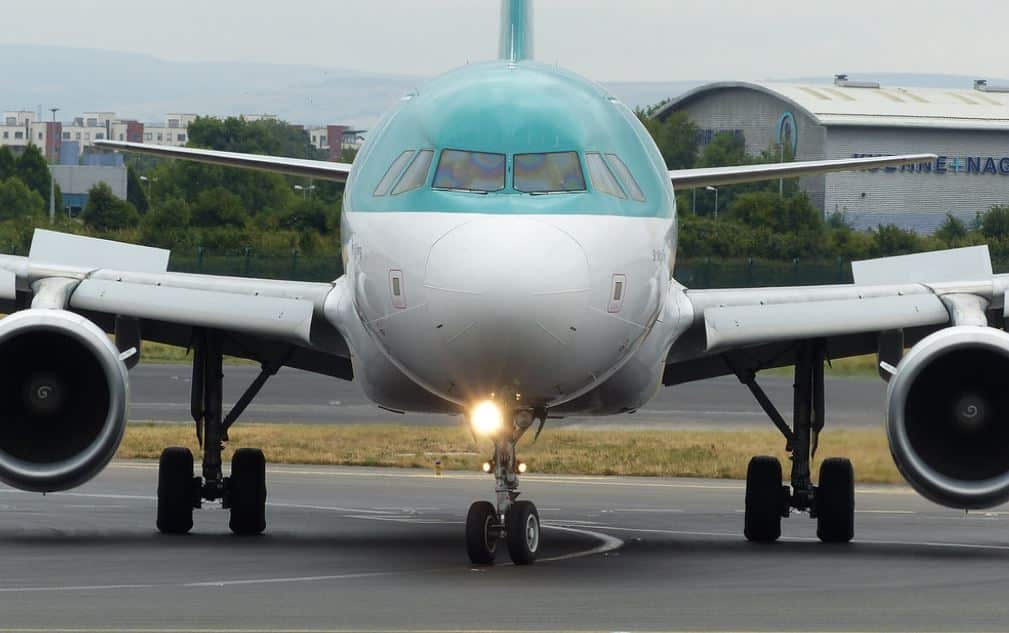Airplanes can slow down or brake in the air by increasing drag. Drag is defined as the force which acts to oppose an aircraft traveling through the air.
As aircraft are designed to be streamlined and aerodynamic as possible, devices are needed to slow the aircraft down when required.
How do Airplanes Brake Mid-Air?
These devices include speed brakes or spoilers, which are fitted on the wings of aircraft. When they are extended, the drag on the aircraft increases while the lift is reduced.
This occurs due to the interruption of laminar airflow over the wing. The speed brake disrupts this smooth airflow, leading to a reduction in the lift while creating this drag force.
The speed brake on an aircraft functions as a creator of drag while also reducing lift. Some aircraft are also fitted with air brakes.
An air brake essentially serves the same purpose as a speed brake; however, it only acts as a creator of drag and doesn’t reduce lift.
The most common drag device on modern commercial aircraft is generally a speed brake, with few aircraft types still in service fitted with air brakes.
This is due to the dual functionality of the speed brake/spoiler device.
Speed brakes can be extended or retracted at various degrees via a lever in the cockpit of the aircraft. Pilots operate this lever at certain phases of flight when airspeed needs to be reduced.
It is common on many commercial aircraft for speed brakes to be “Armed” for landing. This “Armed” function consists of a mechanism that automatically deploys the speed brake on landing.
On the Ground
Aside from being used in-flight, speed brakes and spoilers also have a ground function in the sense that they deploy on landing to help the aircraft decelerate more promptly.
At airports that may have a short runway, this is essential for ensuring the safe landing and rollout of the aircraft.
It can also be useful for aircraft which wish to vacate the runway at an earlier taxiway. The faster deceleration can help to achieve this.
Aside from landing and rollout, airplanes may need to reduce speed in the air. This is most common during the descent and approach phases of flight.
When an aircraft starts to descend, it naturally increases airspeed due to its aerodynamic qualities (gravity). Higher descent rates required for the aircraft to reach its desired or instructed altitudes often lead to an unwelcome increase in airspeed.
To maintain the desired airspeed, pilots can extend speed brakes incrementally to increase drag which will subsequently help to reduce airspeed.
This practice is most common in busy airspace or airports in which there is a large amount of air traffic arriving and departing.
The window for executing a descent may be smaller in such environments due to the high volume.

Limits
There are limits to the use of speed brakes, however. Depending on the manufacturer’s specifications and/or the operator’s Standard Operating Procedures (SOPs), the use of speed brakes may only be permitted if the aircraft is within safe structural limits. The permitted parameters for operating the speed brake vary per aircraft. Such parameters include airspeed and altitude restrictions.
Aside from speed brake devices, aircraft also use their power levers or throttles to reduce thrust settings. Reduction in engine power is operated via the throttle levers in the cockpit of the aircraft. Typically, throttle power setting is always reduced before speed brakes are extended. This reduction in thrust assists in a reduction in lift across the wings of the aircraft.
Final Thoughts
As can be seen above, airplanes have various devices fitted which assist in reducing airspeed during descent, approach, and landing. Without these devices, aircraft would require substantially longer stopping distances along with a longer, slower rate of descent.
Read More:
What is an Aircraft Control Check?
Do Planes Count as Public Transport?

After visiting more than 60 countries, I have probably been on every type of plane there is and visited countless airports. I did my very first international solo trip to South Africa at the age of only 16 and haven’t really stopped traveling since.
Despite the adventurous travel itch, I do have a nerdy side as well – which is satisfied by writing about all things aviation “too boring” for my regular travel blog.
